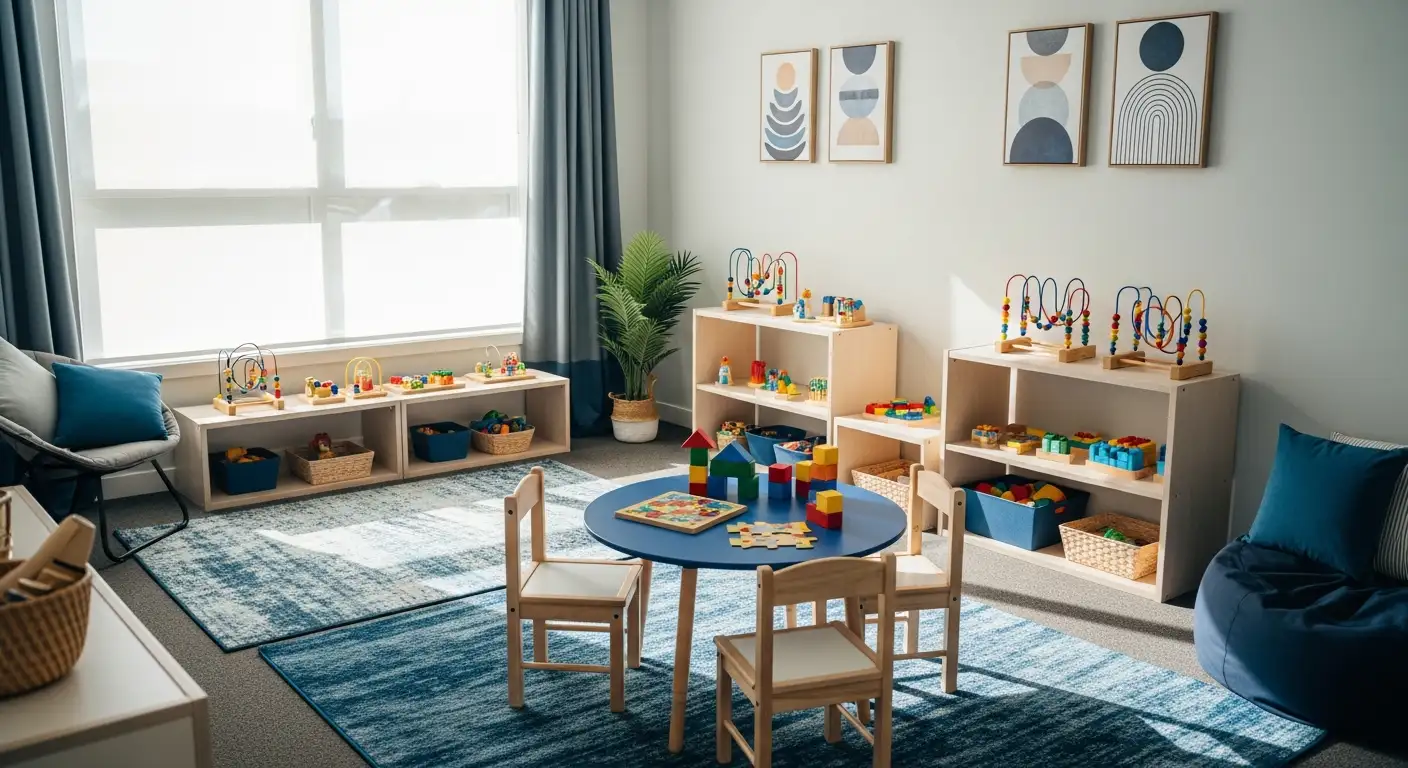Gender Differences in Autism: A Closer Look
Explore gender differences in autism, including prevalence, symptoms, and why boys and girls may show unique signs of autism at different rates.

Key Points:
- Autism is diagnosed more often in boys, but many girls remain undiagnosed due to subtle symptom differences.
- Girls often mask or compensate for autistic traits, which can delay support.
- Understanding gender differences can help parents and clinicians provide earlier and more personalized interventions.
Autism Spectrum Disorder (ASD) is often described as a spectrum for a reason—no two individuals experience it the same way. However, research over the last decade has revealed that the diagnostic landscape is not evenly distributed between genders. Boys are diagnosed at roughly four times the rate of girls, yet recent findings suggest that this gap may reflect diagnostic bias more than actual prevalence.
Girls often present autism differently, especially in early childhood. While boys might show more visible repetitive behaviors or social communication challenges, girls frequently adapt by mimicking peers, masking difficulties, and internalizing stress. This difference can make autism in girls harder to detect until later in life—sometimes not until adolescence or adulthood.
The Gender Gap in Autism Prevalence
One of the most discussed aspects of autism research is the stark difference in diagnosis rates. For years, the commonly cited statistic has been a 4:1 male-to-female ratio. But why does this gap exist? The reasons are multi-layered and tied to both biological and social factors.
Biological Factors
Some studies suggest that genetics and hormones might play a role. For example, testosterone exposure in the womb has been theorized to affect brain development, potentially increasing autism likelihood in boys. However, biology doesn’t tell the whole story.
Diagnostic Bias
Autism research and diagnostic criteria have historically been based on male-centered samples. As a result, many girls don’t fit the traditional profile clinicians look for. Girls who are bright, verbal, and socially aware may develop coping strategies that camouflage their struggles—leading to underdiagnosis.
Social and Cultural Expectations
Society often expects girls to be more empathetic and socially skilled. Because of this, when a girl struggles with social interaction, it’s often attributed to shyness or anxiety rather than autism. This tendency can delay formal assessments and interventions for girls who need support.

How Symptoms Differ Between Boys and Girls
While autism presents uniquely in every individual, patterns in gender differences can be observed. Understanding these can help parents and professionals recognize overlooked signs.
1. Social Interaction and Masking
Girls on the spectrum often develop strong observational skills and mimic the behaviors of peers. They may smile, make eye contact, and engage in social scripts—but these interactions are often learned, not instinctive. This masking behavior can lead to exhaustion and burnout over time.
2. Repetitive Behaviors and Interests
Whereas boys may display overt repetitive movements or fixations (like lining up toys or memorizing train schedules), girls might have special interests that appear socially typical—for instance, collecting dolls or obsessing over a TV show. The difference lies in intensity and depth of focus rather than the subject itself.
3. Communication Styles
Girls are more likely to have stronger verbal skills early on. They may use language creatively and develop advanced vocabularies. However, they might still struggle with understanding social nuances like sarcasm, tone, or nonverbal cues.
4. Emotional Regulation
Autistic girls are often prone to internalizing difficulties such as anxiety and depression. Instead of external meltdowns, they may experience internal emotional distress that goes unnoticed by parents or teachers.

The Role of Masking in Delayed Diagnosis
Masking—the act of hiding autistic traits to blend in—is a key reason why autism in girls can remain hidden. This behavior, while adaptive in the short term, comes at a cost. Many autistic girls report feeling like they have to constantly perform or pretend to be someone else to fit social expectations.
Over time, masking can lead to:
- Social Exhaustion – Constantly analyzing and copying others’ social behaviors drains mental energy.
- Delayed Support – Because challenges are less visible, parents and teachers may assume the child is thriving.
- Mental Health Struggles – Many undiagnosed autistic girls develop anxiety or depression before their autism is recognized.
Recognizing these hidden struggles can help families and professionals provide earlier and more compassionate intervention—something evidence-based therapies like ABA can address through individualized goals and support.
Early Signs to Watch for in Boys vs. Girls
Parents are often the first to notice developmental differences, but the signs of autism can look very different depending on gender. Below are common patterns that distinguish early traits:
In Boys
- Strong preference for routines or rituals, reacting strongly to changes.
- Clear repetitive movements (hand-flapping, rocking, spinning).
- Fascination with mechanical or object-based systems.
- Challenges in initiating or maintaining peer relationships.
In Girls
- Deep interests in people, animals, or fictional characters—but with unusually intense focus.
- Copying friends’ gestures or speech patterns to fit in.
- Strong perfectionism and fear of making social mistakes.
- Emotional sensitivity or withdrawal when overwhelmed.
Because girls may excel in academics or social imitation, many parents don’t suspect autism until social complexity increases in middle school or high school.
Why Recognizing Gender Differences Matters
Understanding these distinctions isn’t just about accuracy—it directly affects a child’s quality of life. Early diagnosis allows access to services like Applied Behavior Analysis (ABA), which can build skills in communication, emotional regulation, and social understanding.
How ABA Therapy Helps
ABA therapy focuses on reinforcing meaningful, functional behaviors while reducing those that interfere with learning or relationships. For girls, this might include fostering self-advocacy, managing anxiety, or helping them navigate friendships without excessive masking. For boys, therapy might focus on expanding social flexibility or adaptive coping mechanisms.
When clinicians recognize gender differences, interventions can be tailored to fit how each child learns and expresses themselves—a key part of effective, compassionate care.
Supporting Autistic Girls and Boys: Practical Tips for Parents
Parents play a critical role in helping their children thrive. Once a diagnosis is made (or even before), understanding your child’s unique strengths and stressors makes a difference.
1. Encourage Authentic Expression
Give your child space to express their interests and emotions without judgment. Masking might feel like a necessity for them, but creating a home environment that celebrates individuality encourages self-acceptance.

2. Build Predictable Routines
Structure can help both boys and girls on the spectrum feel secure. Visual schedules or transition warnings can reduce anxiety during daily changes.
3. Foster Social Learning Naturally
Instead of forcing group play, start with shared interests—like building with blocks, crafting, or story-telling—to teach turn-taking and communication.
4. Seek Professional Guidance Early
If you notice subtle differences in social or emotional development, don’t wait for the school to raise concerns. Early evaluation by an autism specialist or BCBA can identify areas of need before they escalate.
5. Consider ABA Therapy
ABA therapy is one of the most researched approaches for autism. It can be adapted for every gender, age, and ability level, focusing on functional communication, emotional regulation, and social confidence.
Bringing It All Together
Gender differences in autism are real—not in value or ability, but in how traits manifest, how society perceives them, and how quickly they’re recognized. When parents and professionals understand these nuances, children can receive the right kind of help sooner.
At Attentive Autism Care, we understand that every child’s journey with autism is unique. Our ABA therapy programs are designed to meet each child where they are, supporting emotional growth, communication, and independence in a nurturing environment. If you’re ready to explore personalized support for your child, contact us to learn more about ABA therapy in Nebraska, Colorado, Utah, North Carolina, Maryland, and New Mexico. Together, we can help your child build skills that last a lifetime.



































































































